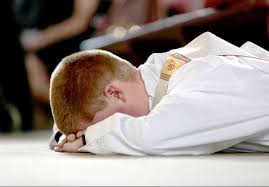 |
| Becoming a scrum master is like becoming a priest |
The role of a Scrum Master is a complicated one. I have written about the topic numerous times. As I have grown more comfortable in the role, it occurred to me that this position resembles the life of a parish priest or Protestant minister. You are always visible and accountable to the people you serve. I firmly believe in the need for a human being to have ritual and routine in their lives. Both Carl Jung and Joesph Campbell, mention that the collective unconsciousness is something which needs nurturing. If we do this, then we are on the way to building effective teams.
The daily stand up-
Each day the team gathers around the metaphorical campfire and talks about what they have done, what they will do, and obstacles. Working in an office creates a few anti-social behaviors. It is very easy for people to cocoon into their desks and ignores others. The stand up breaks people out of that unhealthy habit. Each day for 15 minutes they interact with the scrum master and each other. The group stands because it forces people to pay attention to one another. It also keeps side talk to a minimum. Finally, it helps foster a sense of teamwork because everyone is participating and involved in the success of the project.After a few weeks or months, the scrum master should not facilitate the meeting. Instead, the team should learn to run its stand-up meetings. It is part of the ethos of self-organization. It is essential to the success of agile at any organization.
Backlog Grooming or Refinement –
The Product Owner has the most difficult job in agile. They work with the “business” and the development team to create software each sprint. Backlog refinement is where most of this job happens. The Product Owner and the development team go over the backlog. This meeting is designed to clear up any misunderstanding, explain user stories, and set priorities. It is an informal meeting with back and forth conversations. The Product Owner facilitates this session. It can be done regularly each day or scattered around a work week. The keeps communication between the team and the product owners flowing.Sprint Planning –
The Scrum Master, Product Owner, and development team get together to decide what they want to work on in the next sprint. Using the refined backlog the team and the Product Owner decide what to do next. This meeting is a little more formal as the team estimates and tasks out the work. The meeting also ends with a consensus about what the sprint goals are and how to meet them.Sprint Review or Demo –
One of my biggest frustrations I had as a developer was spending a year on building a software product and then showing it to the user community and having them say it is not what they wanted. The sprint demo is designed to eliminate this situation. After a sprint, the development team shows off their work to the Product Owner and the people who are stakeholders in the project. Here they gather notes and feedback where they can improve. The demo also shows the business that things are getting done and that they will have software in a measurable amount of time.The Retrospective –
The retrospective led by the scrum master. It is a combination of rituals. It is about what happened. It is also a look forward at how to improve. Everyone participates in the process, and everyone contributes. It is up to the Scrum Master to take notes and help the team improve on how it is supposed to do its work. The retrospective is the most difficult part of the scrum process, so a scrum master good at facilitating meetings is essential.So this is my take on the rituals of Scrum and why we do them. They are all important, and if you do not do them, the effectiveness of your scrum teams will suffer.
Until next time.



